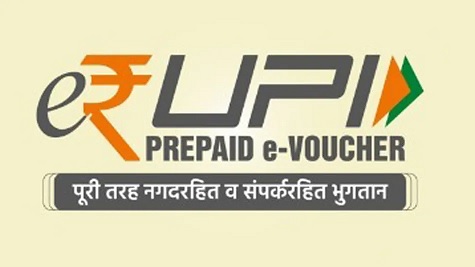Digital Rupee vs. UPI: Understanding the Differences
UPI vs. Digital Rupee: UPI acts as a conduit for transactions involving real money. Another currency that resembles fiat money is the digital rupee.
UPI vs. Digital Rupee
UPI vs. Digital Rupee: UPI only acts as an interface for financial transactions involving real money, in contrast to Digital Rupee. The digital Rupee and UPI are two fundamentally different concepts. India may hope to someday stop using UPI by introducing the digital rupee. By relying on the digital rupee, the idea is projected to lower the cost of managing and sending cash money. Digital currency’s goal is to someday eliminate the need for real money.
UPI vs. Digital Rupee: About eRupee
The terms “digital rupee” or “digital currency” allude to a digital counterpart of paper money. The value of the digital rupee is equivalent to that of cash. For example, one rupee in money is equal to one rupee in digital form. This just shows that, unlike cryptocurrencies, the value of the virtual rupee is fixed.
UPI vs. Digital Rupee: Using and Purchasing Digital Rupee
To buy a Digital Rupee, users must go to the official app or website of one of the four certified banks. The RBI hasn’t made clear the specific steps for buying digital rupee, but it has said that users will be able to use QR codes displayed at retailer locations to make purchases, and the money will be withdrawn from bank wallets.
Using Digital Rupee, one can shop and make purchases at neighbouring Kirana businesses. Both individuals and corporations are able to swap digital rupees.
UPI vs. Digital Rupee: Background
Unlike the Digital Rupee, UPI only acts as an interface for financial transactions using real money. While Digital Rupee cannot be taken out of a bank account, it is only another form of money that is identical to fiat money. However, users of the UPI interface can make online purchases using their bank accounts. Practically all transactions are conducted with fiat money.
Differences between UPI and the Digital Rupee
Digital Rupees
The terms “digital rupee” or “digital currency” allude to a digital counterpart of paper money.
A digital rupee is the same as a physical rupee.
To buy digital rupee, users must go to one of the four recognised banks’ official apps or websites.
Both individuals and corporations are able to swap digital rupees.
UPI
Unlike the digital rupee, UPI only acts as an interface for financial transactions using real money.
Customers can perform online transactions using their bank account thanks to the UPI interface.
24-hour, 365-day instantaneous money transactions on mobile devices.
A single mobile application can be used to access multiple bank accounts.
UPI vs. Digital Rupee: Frequently Asked Questions
Ques. What does the term “Digital Rupee” mean?
Ans. As a central bank digital currency, the Reserve Bank of India (RBI) intends to launch the Digital Rupee (e), also known as the eINR or E-Rupee (CBDC). After being suggested in January 2017, the Digital Rupee would be introduced in the fiscal year 2022-2023.
Ques. What distinguishes internet banking from digital currency?
Ans. In terms of both idea and application as a unit of account and a tool for conducting daily transactions, digital money is comparable to its physical counterpart. But it’s not money. The dollars in your online bank account are not digital currency since when you take money out of an ATM, for example, it takes on a physical form.
Ques. Is UPI a type of digital money?
Ans. Physical cash is used to support UPI transactions. The payment will not be executed if the user’s bank account is insufficiently funded. But you can use the e-rupee in place of money or currency to conduct digital payments. The e-rupi is a form of legal tender issued by RBI.
Ques. What are the benefits of the digital rupee?
Ans. According to the RBI data, fraud cost Indian banks close to USD 50 billion between 2018 and 2020. It is anticipated that the introduction of the Digital Rupee in India will improve our currency management system’s efficiency, transparency, systemic resilience, and governance.
Ques. What are the two primary categories of electronic money?
Ans. Bitcoin, stablecoins, and CBDCs are the three main types of digital currency (central bank digital currencies). Blockchain technology, the underpinning of cryptocurrencies, is the most widely utilised type of distributed ledger employed by digital currencies.



